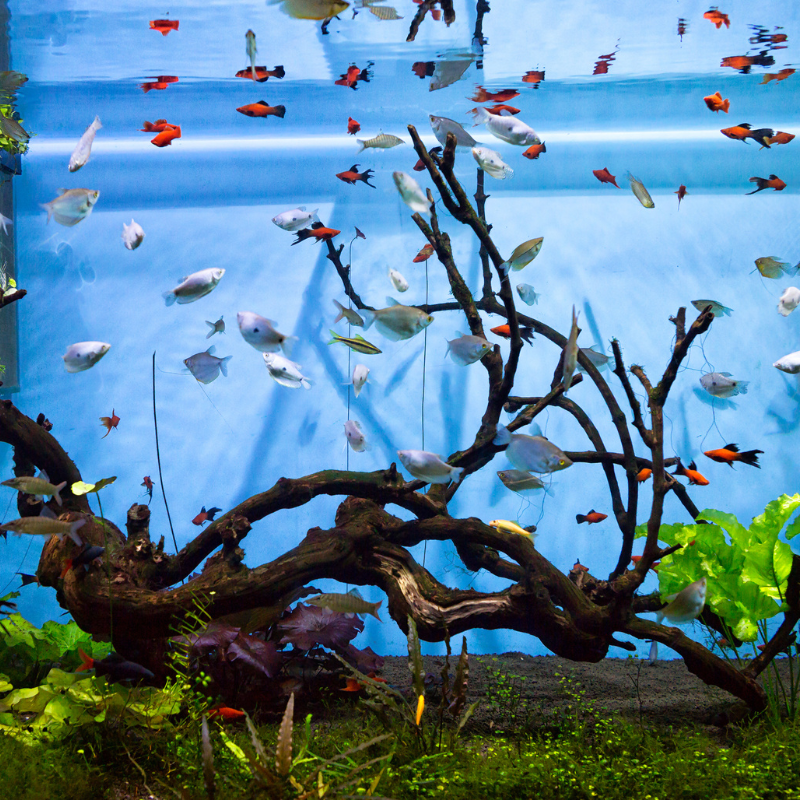Next working day delivery with Royal Mail Tracked 24
Preparing Driftwood for Aquarium Use

How to Prepare Bogwood for Fish Tank use
Driftwood, or bogwood, has been used in aquariums for many years to create stunning aquascapes and scenery, as well as providing habitat and hiding spaces for many species of fish.
The common myth, or worry, is that bogwood needs to be "prepared" in a special way before adding it to a fish tank, in the belief that it could be toxic, full of parasites, or in any way harmful to your aquarium inhabitants. The truth is much simpler than that.
Most driftwood pieces, before saturating, will float. They also release tannins into the water, which will discolour it to a brown 'tea' colour. (Tea is essentially leaf tannins!) so any 'preparation' in essence is to deal with these issues, rather than any toxicity or parasite. Buying driftwood from an aquatic pet store is a good idea, rather than picking from the wild, thus eliminating any risk of potential hitchhikers.
If a large piece of bogwood is added to an aquarium without any preparation, it will typically float until it has absorbed enough water to sink. As it does this, it will leach its brown tannins into the water, causing the water to change colour and in some extreme cases darken the environment sufficiently to disrupt the viewing of your fish.
Tannins, despite causing a brown tint in your water, actually have preventive and healing properties which can boost fish and shrimp immunity, so overall they are quite beneficial. The discoloration can take a while to clear however, so it is a good idea to follow a few basic steps to reduce the potential for tannins to leach.

To prepare driftwood for aquarium use:
1. Ensure it is bought from a store, and not wild-picked
2. Wash and then soak the driftwood in a sterile bucket or large saucepan for 48-72 hours (Be aware that the tannins may stain the bucket/pan)
3. Add fine flossy foam and active carbon to your filter to further filter out any tannins that leach into your tank, if you prefer your water crystal clear and untainted.
4. Complete 10-20% water changes weekly to dilute any tannins that may leach into your aquarium.
Boiling Bogwood
Another common method is to boil the wood to release the tannins, but this is generally unnecessary as tannins are very easily removed with carbon and water changes in the aquarium. The boiling method should only really be used if you are using wild-picked bogwood, to eliminate any potential hitchhiking creatures, parasites or bacterial and fungal residue that may have developed in the wild.
Biofilm on Driftwood
Many aquarists experience a white to greyish bio-film or mucus growing on newly installed pieces of driftwood. This is commonly a fungal or bacterial bloom and is harmless to you and your fish. You can remove it with a fine brush and may notice your pleco's grazing on it, but it may return occasionally before disappearing altogether.

To browse our range of aquarium bogwood online click here.
To browse our range of active carbon online click here.
To browse our range of fine flossy foam online click here.
Photo credit(s): Canva Pro Licence




